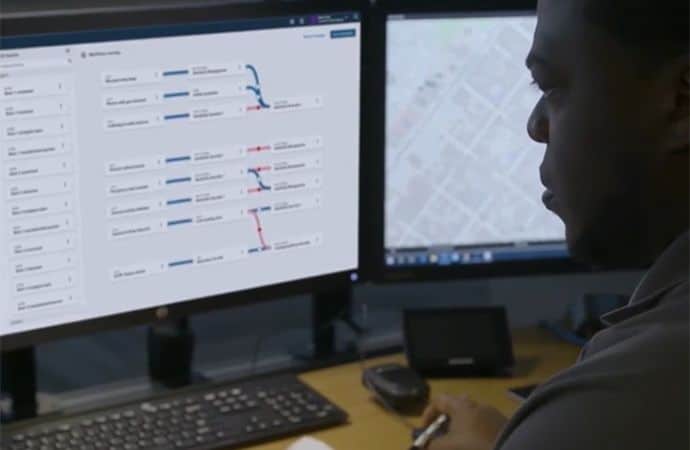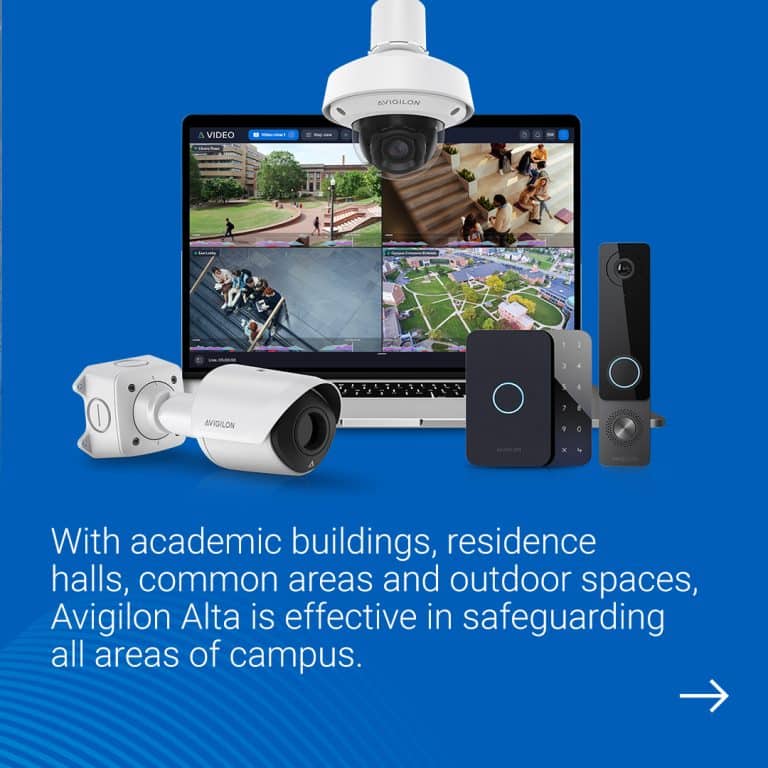Real-time video streaming is about safety for responders, and the public. This safety – in the form of virtual backup – can sometimes be the difference between life or death in operational scenarios.
Imagine this situation:
A traffic patrol officer gets a hot-hit alert on their in-car video camera with License Plate Recognition (LPR) enabled. The officer radios dispatch to validate the status of the traffic warrant, and begins following the suspect vehicle.
With confirmation from dispatch the vehicle is still entered as “stolen”, the officer activates the patrol car’s lights and siren. This action automatically triggers the video camera to begin recording. An on-duty CommandCentral Aware analyst realizes the officer is stopping a stolen vehicle and begins livestreaming the encounter for situational awareness and virtual assistance.
As the officer approaches the vehicle, the driver suddenly jumps out and attempts to overpower the officer. The suspect is attempting to take control of the officer’s weapon. Unable to get control of the subject and fearing for his safety, the officer activates the emergency button on his radio.
Dispatch broadcasts the emergency location and all available officers converge on the scene. The CommandCentral Aware analyst was able to witness the entire encounter and is instrumental in communicating critical updates to officers responding to assist. The suspect is taken into custody in less than a minute with assistance from multiple units.
But what if…
What if the suspect was armed? What if dispatch was handling another emergency and radio traffic was busy? What if additional officers were not available or were too far away to assist? All of these what-ifs could lead to a deadly confrontation. This scenario may have ended up in a gun battle, perhaps surprising the officer or even causing death or serious injury to the officer, the suspect, or innocent civilians in the area.
With virtual backup during high risk encounters, the officer can concentrate on the subject they encounter. An analyst providing additional eyes on scene can help notice things the officer may not see and help to direct backup officers responding to assist with real time information.
Livestreaming from the M500 in-car cameras is now available within CommandCentral Aware.
Top reasons that law enforcement agencies utilize body-worn, in-car and even drone video livestreaming include:
- Provide Remote Support from the Command Center: When dispatch and/or the real-time operations center personnel are able to see a common operating picture of officer and resource locations, investigating officers in the field can receive better information and faster remote support when needed. Real-time updates from the scene can be relayed to responding units, including emergency medical services (EMS) personnel, thereby allowing the primary responders on scene to focus on the situation.
- Get More Eyes on the Scene: Having virtual backup through video livestreaming adds additional eyes on the scene. A supervisor or commander can tune in to a situation when necessary to provide tactical advice and supervision during an escalating incident.
- Provide a Factual and First Hand Account of the Event: Livestreaming can support a first hand account of what the officer was seeing and experiencing. Video evidence is always important to provide context to any police action resulting in arrest or use of force. Without a body-worn camera or in-car video to support an officer’s actions, bystanders may be capturing their own video of the incident and post only the portions of the video that appear to benefit the suspect.
- Pick Up Cues Beyond an Officer’s Peripheral Vision: Tunnel vision can lead to less focus on peripheral details especially during an on-going unstable event. A multi-view perspective via multiple video sources enables a third party to see beyond an officer’s field of view. Video sources including fixed street cameras, business or residential security cameras, in-car and body worn cameras, and even drone video can provide a more holistic, 360 degree view of a situation that can illuminate insights outside of the line of sight of involved officers.
Information and specific details that previously were either unavailable or undetectable now can assist officers in making informed decisions resulting in a higher probability of positive outcomes. Primary responders and backup officers who are provided with on-scene situational awareness can make the difference in realizing a safe, successful outcome in any operational scenario.
Contact us to find out more about our solutions and services.










